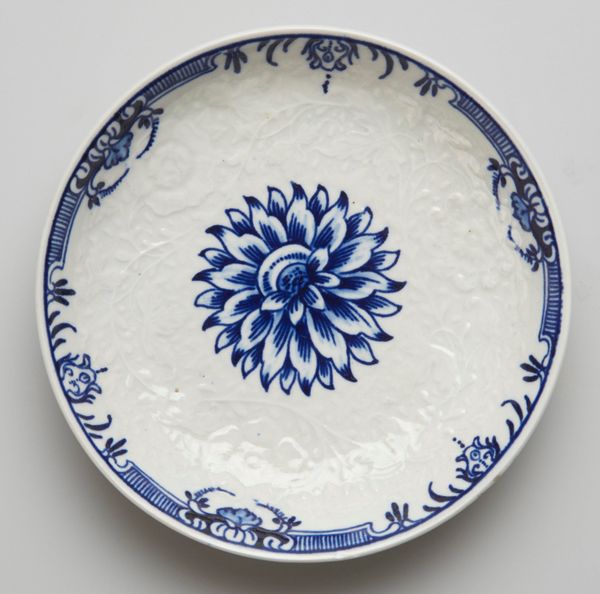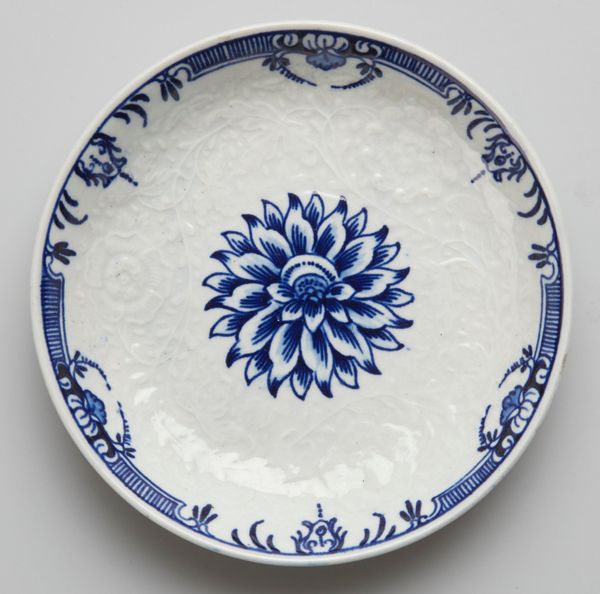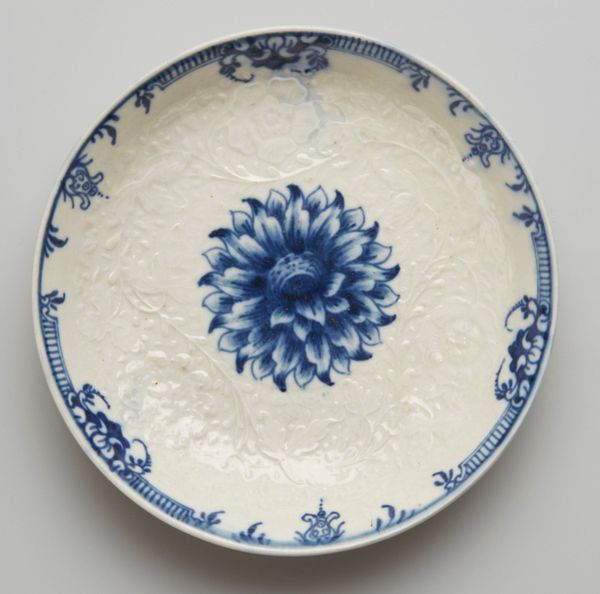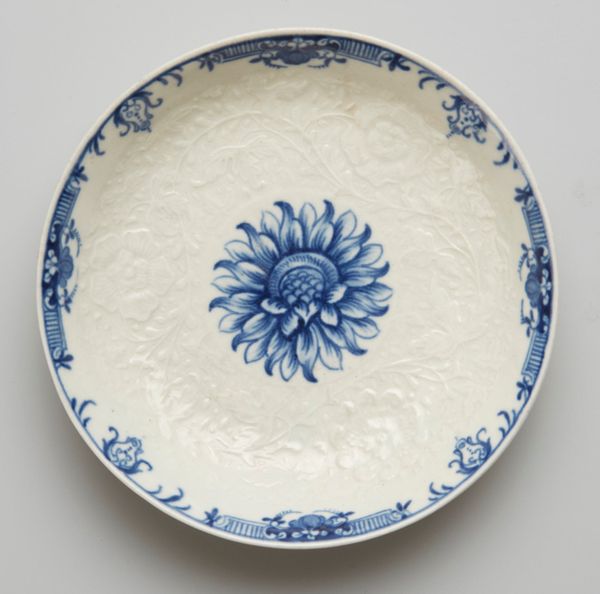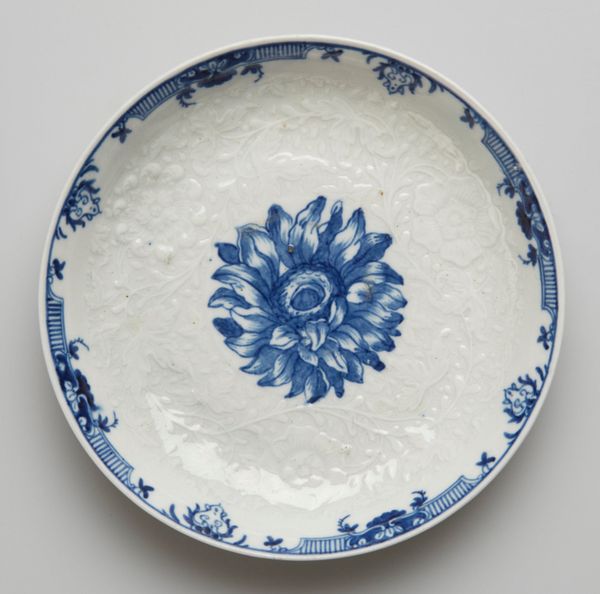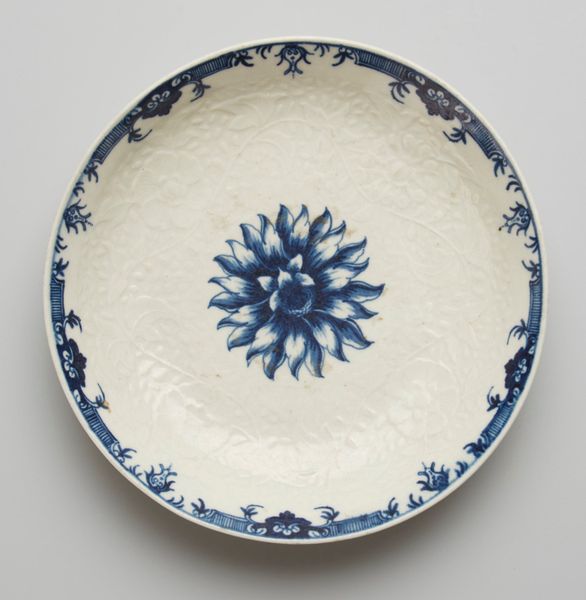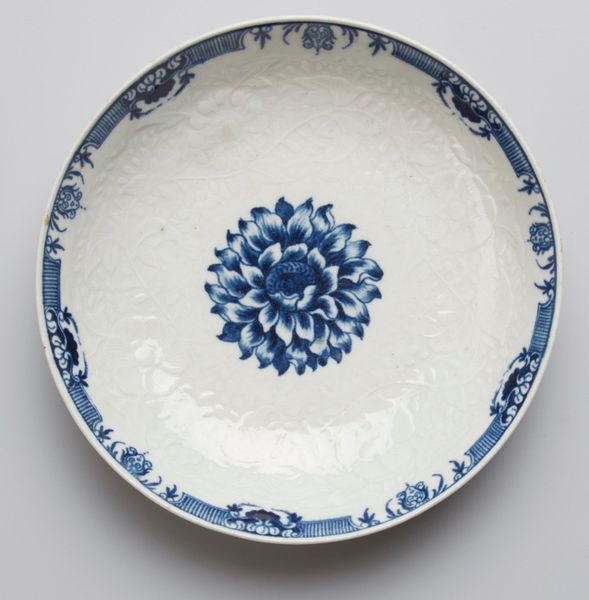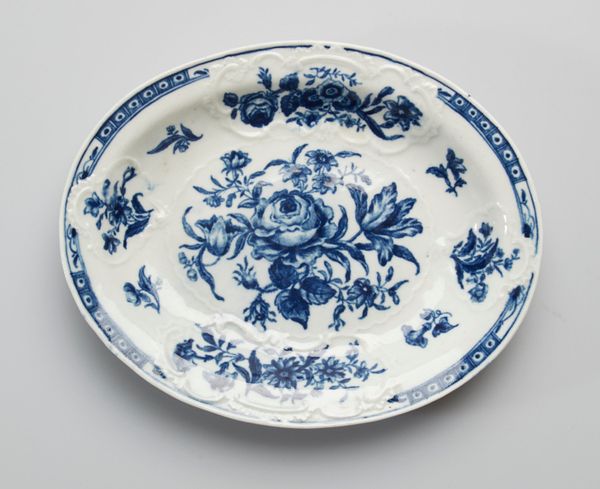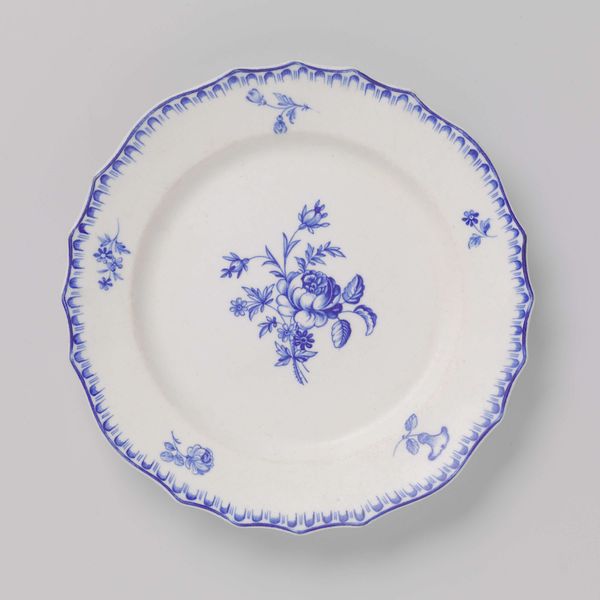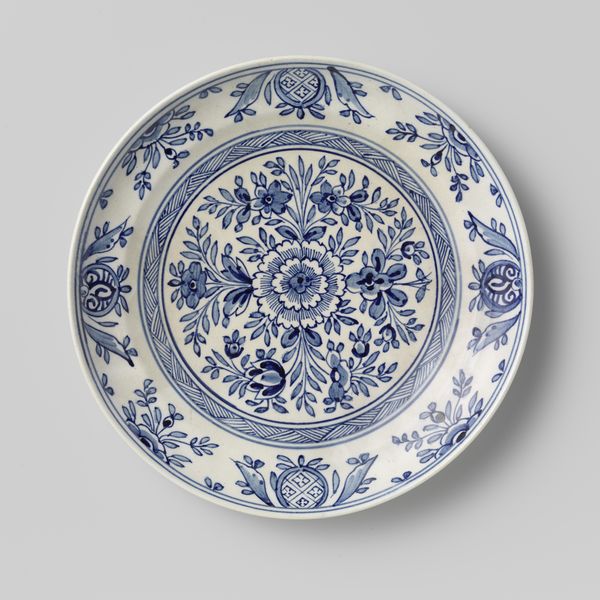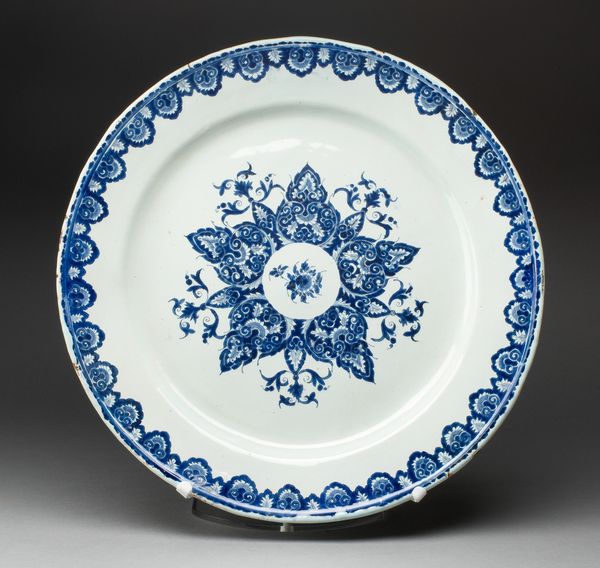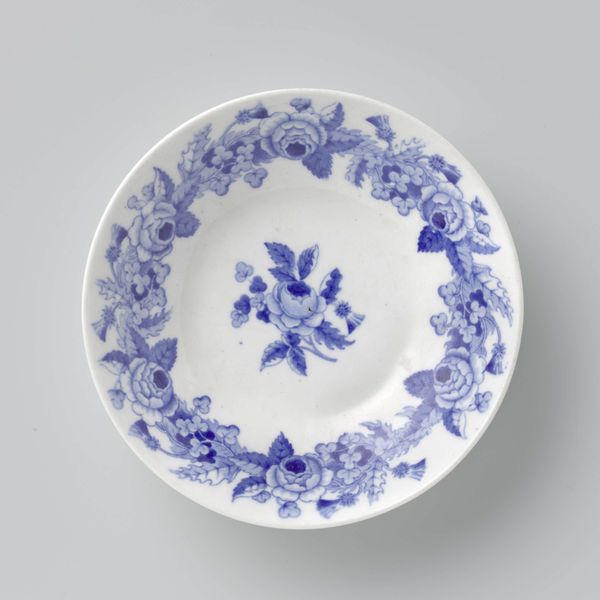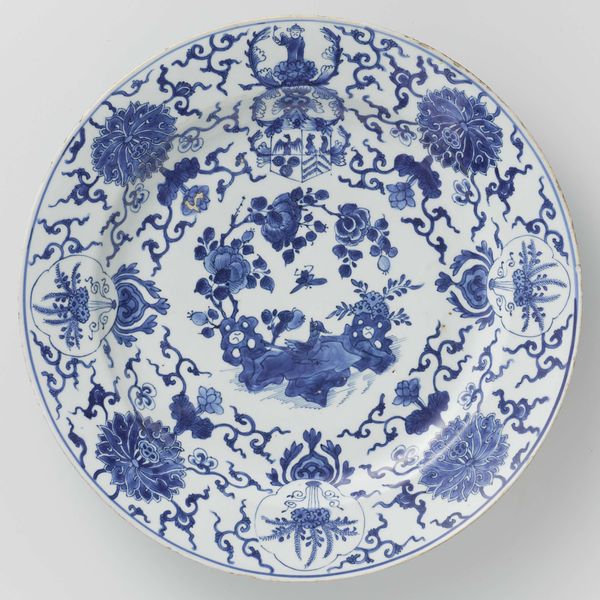
Saucer c. 18th century
0:00
0:00
ceramic, porcelain
#
ceramic
#
porcelain
Copyright: Public Domain
Curator: It's lovely, so delicate and restrained. I immediately feel transported to a calm, sunlit space. Editor: I’m drawn to that too. This porcelain saucer, aptly titled "Saucer", comes from the Worcester Porcelain Works and dates to around the 18th century. It offers us a glimpse into the intersection of commerce, aesthetics, and societal norms of the time. Curator: Absolutely. It is so interesting that a small ceramic piece reflects so much about the political implications of global trade, and how particular types of visual rhetoric came to symbolize prestige. Porcelain itself held immense cultural value, seen as a symbol of refinement. Were there particular politics around accessing such "delicate" artwork, especially among certain groups? Editor: Indeed. The blue-and-white aesthetic was immensely popular and, in many ways, references Chinese porcelain, highly coveted in Europe during this era. But consider Worcester's unique contribution. By emulating Chinese designs yet producing it within England, the work engages with colonial economies in interesting ways. The very act of its creation can be interpreted as a push for national production and independence. Curator: So even something as seemingly simple as a floral design in underglaze cobalt blue is loaded with political subtext. Thinking about how the floral design functions too, it centers what we might today see as quite formal taste cultures and speaks to issues of wealth and display. I see not just an object of beauty but also a representation of cultural exchange, appropriation, and economic power dynamics of the eighteenth century. What function does art serve beyond simply beautifying domestic spaces? Editor: Precisely. What it says about identity, class, gender – and how these are interwoven – offers us richer understandings. It is a humble item. Looking at it now, within the collection of the Minneapolis Institute of Art, invites questions. This work now functions as a historical artifact—an item meant for daily use now framed as precious. Curator: In engaging with "Saucer," I have been rethinking material culture—wondering what this Saucer could communicate to future societies, if that was even considered in the first place. Editor: Thinking about "Saucer", I appreciate it as both art object and historical document—evidence of global commerce and an aesthetic trend.
Comments
No comments
Be the first to comment and join the conversation on the ultimate creative platform.
